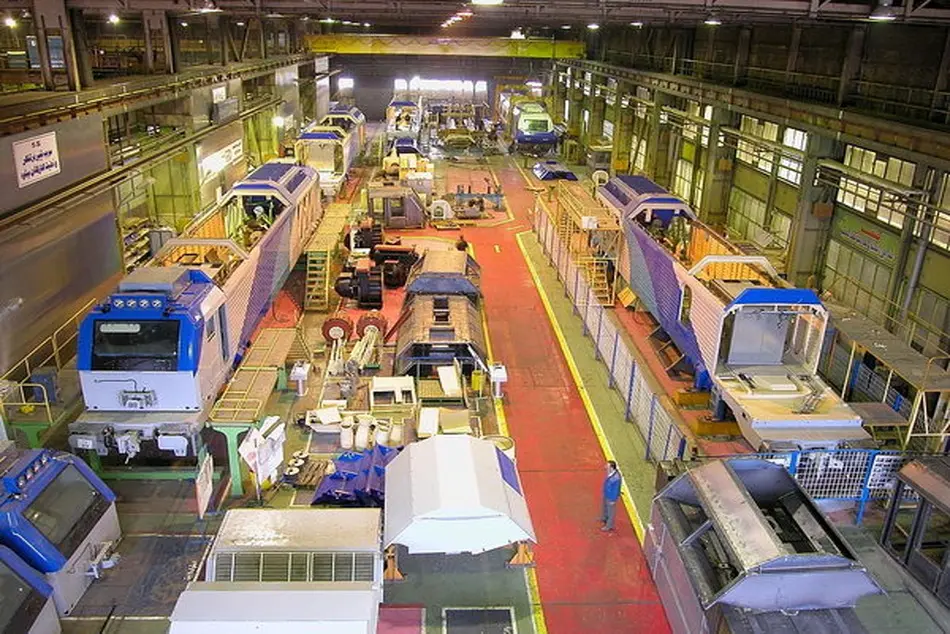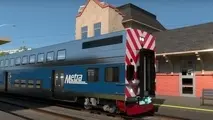Alstom locomotive maintenance issues in Iran
While Alstom AD43 locomotives offered some advanced features like AC traction motors that were first experienced in Iran and even in the Middle East, they have faced significant reliability and maintenance issues over the years.

The Alstom AD43 locomotive was introduced to Iran's railway system in the late 1990s as part of a 100-unit order valued at 192 million Euros. These 4300-hp locomotives were designed for both freight and passenger service. While they offered some advanced features like AC traction motors that were first experienced in Iran and even in the Middle East, they have faced significant reliability and maintenance issues over the years.
Key shortcomings of the AD43 locomotives include:
1. Engine problems: The RK215 diesel engine, rated at 4200 hp, has been a major weak point. Production of this engine started for this project and UIC approval was received in No. 50 and the engine production was discontinued, making spare parts difficult and expensive. The engine experiences frequent breakdowns and shutdowns.
2. Cooling system deficiencies: The locomotives suffer from overheating issues, likely due to problems with the cooling system design or components like thermostats, radiators, and control.
3. Engine control system flaws: The protective and control systems tend to shut down the engine too quickly when minor issues occur, rather than allowing continued operation at reduced power like other locomotive models. This leads to more frequent complete shutdowns worsening the failures.
4. Turbocharger failures: Early on, turbochargers were failing after only a few months instead of the expected 2-year lifespan which could be because of cooling issues.
5. Lower-than-expected hauling capacity: Early testing showed the locomotives could only haul about 70% of their rated capacity which is equal to DC locomotives.
6. Poor reliability and availability: The locomotives have suffered from low availability, often with only around 50% of the fleet operational. In late 2023, only 20 out of 100 units were reported to be in service.
7. Insufficient diagnostic capabilities to help troubleshoot issues
8. High maintenance costs: Maintenance costs for these locomotives are reported to be significantly higher than comparable models.
9. Lack of continuous improvement: Despite the local assembly of 80 units, there was little evidence of design improvements or upgrades to address known issues over time.
These control system problems lead to more frequent complete shutdowns compared to other locomotive models. While intended as a safety measure, the frequent shutdowns increase the potential for engine damage from thermal cycling and restart attempts.
The issues with the AD43 locomotives highlight several broader points:
A-The importance of thorough testing and gradual implementation when introducing new locomotive models, especially those with new technologies.
B- There is a need for robust technology transfer and localization programs that allow for continuous improvement of locally assembled products.
C- The critical role of proper maintenance practices, especially during the warranty period, is to identify and address issues early.
D- The value of analyzing failure data to drive design improvements and maintenance strategies.
E- It Is important to consider total lifecycle costs and reliability, not just the upfront purchase price or raw performance specifications.
F- The challenges of relying on proprietary engine designs with limited global support, versus more widely-used engine platforms.
To address these issues, several approaches have been suggested:
1. Replacing or extensively modifying the problematic RK215 engine with a more widely-supported model.
2. Upgrading the cooling system components and implementing better coolant treatment practices.
3. Reprogramming the engine control systems to allow more flexible operation and fewer unnecessary shutdowns.
4. Implementing a rigorous root cause analysis program to systematically address recurring issues.
5. Considering conversion of some units to dual-mode electric/diesel operation as part of a major overhaul program.
6. Using the lessons learned to inform future locomotive procurement and development strategies.
The experience with the AD43 locomotives serves as a case study of the complexities of technology transfer and the importance of lifecycle management in railway motive power. While the locomotives offered some advanced features, the lack of sustained support and improvement has limited their long-term value to the Iranian railway system. Future projects would benefit from more comprehensive planning around maintainability, reliability, and continuous improvement.




